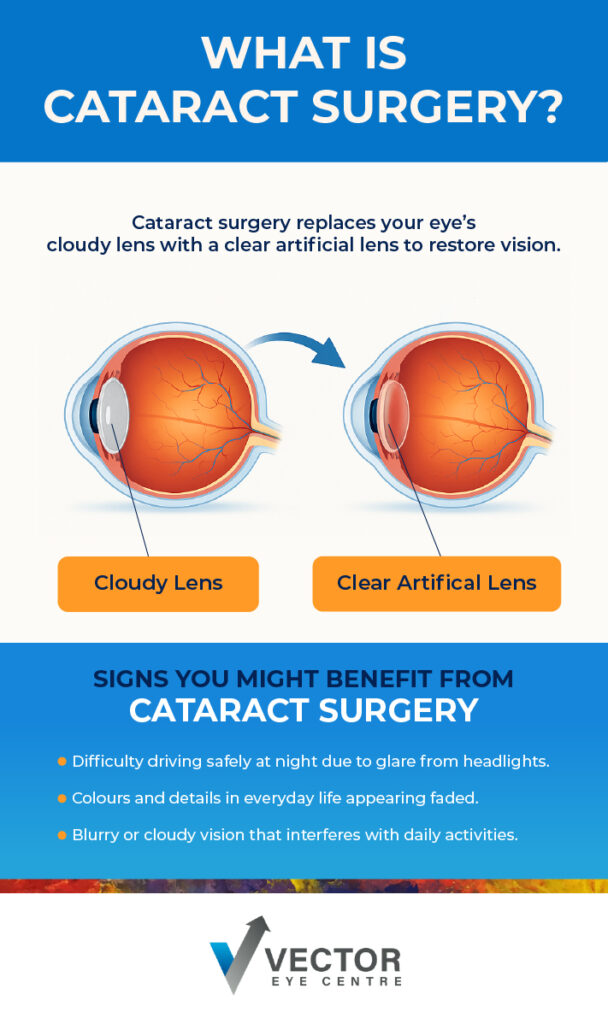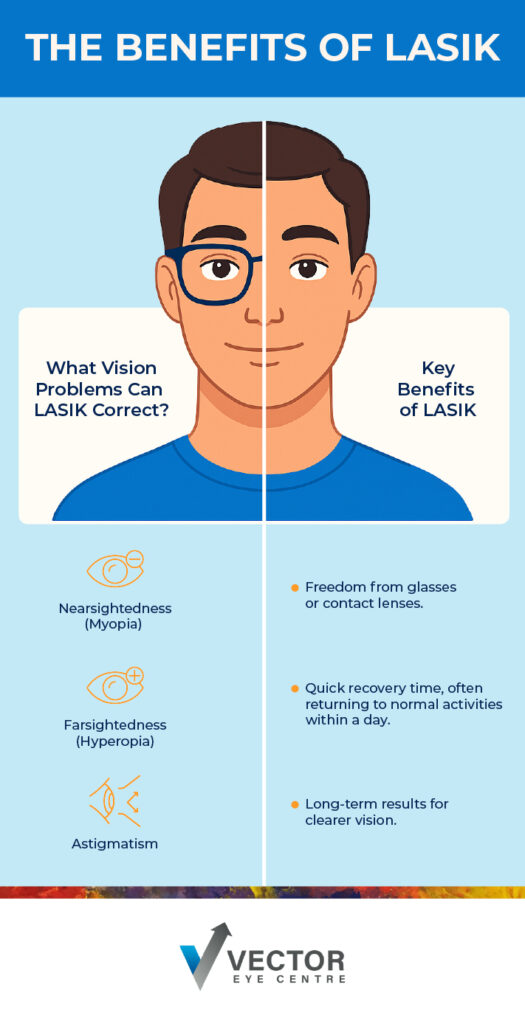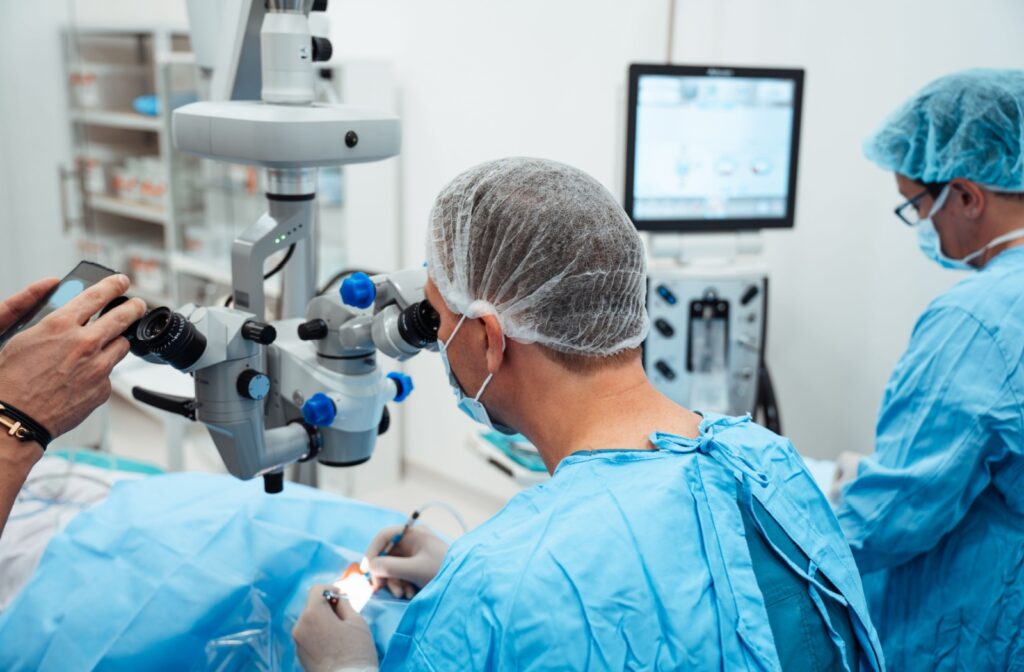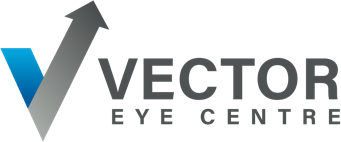Understanding eye care can feel overwhelming, especially with so many different treatments and procedures to consider. A common area of confusion is distinguishing between eye surgeries like LASIK and cataract surgery. While both aim to improve vision, they address very different issues within the eye.
Cataract surgery focuses on replacing the eye’s clouded natural lens with a clear artificial one, restoring clarity and sharpness. LASIK reshapes the cornea, the eye’s outer layer responsible for bending light, to correct conditions such as nearsightedness or farsightedness. Knowing these differences can help you make informed decisions and better understand the care your eyes may need.
What Are Cataracts?
Cataracts are areas of cloudiness that develop in the crystalline lens of the eye, a common issue as we age, leading to progressively blurrier or hazier sight. If left untreated, cataracts can ultimately cause significant vision impairment or even vision loss.
Key symptoms include:
- Blurry vision
- Light sensitivity
- Faded colours
- Double vision
- Difficulties with night driving
- Decreasing visual performance as we age
What Is Cataract Surgery?
Cataract surgery is one of the safest and most common procedures performed today. This surgery is not only straightforward but also highly effective. During the procedure, your eye’s cloudy lens is removed and replaced with a clear, artificial lens that helps restore your vision. Typically, patients are able to return home the same day as the surgery.
The surgery is quick, usually lasting about an hour, and involves several key steps. Here’s what your doctor will do during the procedure:
- Numb your eye: Special drops are used to numb your eyes during the surgery.
- Remove the cloudy lens: Using modern tools, your eye surgeon will gently break apart and remove the lens that’s causing the blur in your vision.
- Insert the new lens: A clear, artificial lens is placed in your eye to take the place of the one that was removed.
- Allow time to rest: After the procedure, you’ll have a short recovery period before heading home.
For most people, the results of cataract surgery are remarkable. Many patients experience improved vision shortly after the procedure, carefully following post-op care for 2-4 weeks, though it may take up to 8 weeks for your eyes to fully heal. With a little patience and proper care, you’ll likely notice a big difference in your ability to see clearly.

Who Could Benefit from Cataract Surgery?
Cataracts can impact your vision in different ways, and not everyone with cataracts will need surgery right away.
Early on, cataracts might not cause noticeable problems, and a stronger prescription for glasses or contacts may be enough to adjust for the slight changes in vision. But as cataracts progress, they can make everyday tasks like reading, driving, and recognizing faces more difficult. When this happens, cataract surgery often becomes the best option for restoring clear vision.
Cataract surgery is usually recommended when cataracts significantly interfere with your ability to see and perform daily activities. If you find it hard to drive safely at night due to glare from headlights, or if colours and details appear faded or blurry, you may be an ideal candidate for this procedure.
It’s worth noting that cataracts tend to worsen as we age, usually between the ages of 55 to 70 years old, so delaying surgery for too long can sometimes make the condition trickier to treat. Acting sooner rather than later often leads to better results.
What Is LASIK?
LASIK, short for laser-assisted in situ keratomileusis, is a popular type of refractive surgery. There are a few different types of refractive surgery, and the right choice for you depends on your eye health and lifestyle. Refractive surgeries are designed to reshape the cornea, the clear, dome-shaped surface at the front of your eye that plays a key role in focusing light.
For people with normal vision, the cornea bends (or refracts) incoming light so that it lands directly on the retina. The retina then converts this light into signals that our brain interprets as clear images.
However, when the cornea doesn’t bend light properly, it can lead to common vision issues such as myopia (nearsightedness), hyperopia (farsightedness), or astigmatism. That’s where LASIK comes in.

The LASIK Surgery Process
During a LASIK procedure, your eye doctor will use a highly accurate, pre-programmed laser to reshape your cornea. By altering your cornea’s shape, the laser helps it refract light more precisely so it reaches the retina correctly. The result? Sharper, clearer vision without the constant need for glasses or contact lenses.
Before the procedure begins, your eye doctor will place numbing drops in your eye to help you feel comfortable throughout. Using a precise tool or laser, the surgeon creates a thin flap on the surface of your cornea. This flap is lifted carefully to expose the underlying corneal tissue that will be reshaped.
A specialized laser, pre-programmed based on your individual measurements, is used to reshape the cornea. The laser removes tiny amounts of corneal tissue to correct the way light is bent (or refracted) as it enters your eye.
Once the reshaping is complete, the surgeon gently places the corneal flap back into its original position. The flap acts like a natural bandage, adhering on its own without the need for stitches. Your doctor will provide specific aftercare instructions. Most people notice improved vision within 24 hours, though it can take a few weeks for your eyes to adjust fully.

Who Could Benefit from LASIK Surgery?
LASIK surgery is a popular choice for people who want freedom from glasses or contact lenses, and is usually offered to patients between 20 – 40 years old. But who is LASIK designed to help? Generally, it’s a great option for people with the following vision conditions:
- Nearsightedness (myopia): Difficulty seeing things at a distance.
- Farsightedness (hyperopia): Struggles with seeing objects up close.
- Astigmatism: Blurred or distorted vision caused by an irregularly shaped cornea.
Comparing LASIK & Cataract Surgery
LASIK and cataract surgery address different vision issues. Cataract surgery involves replacing a cloudy lens in older patients, while LASIK reshapes the cornea to correct refractive errors in younger patients. Both surgeries are integral parts of comprehensive eye care, targeting specific conditions and offering visual benefits.
At Vector Eye Centre, our team of experienced, compassionate ophthalmologists takes pride in delivering quality eye care to every patient. We’re passionate about helping improve your vision and quality of life.
If you’re exploring cataract surgery or LASIK, we’re here to guide you through the process with personalized advice and care. Contact us today to learn more about your options.



